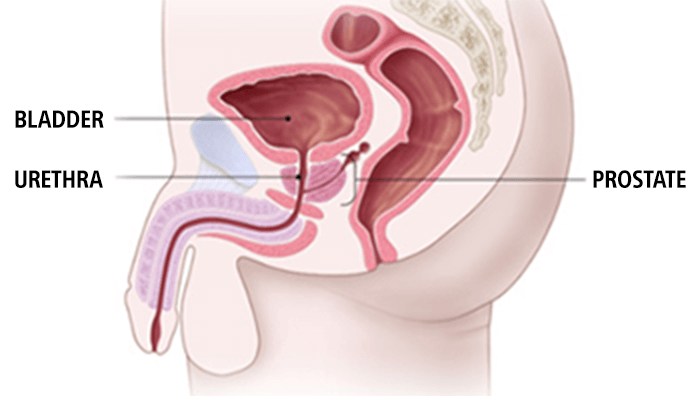Health Essentials
Demystifying nausea
Nausea is a very common complaint and almost everyone experiences this sometime in their life. It is an experience that occurs with the feeling that you are about to vomit. When you are nauseated you may feel weak, sweaty and have too much saliva in your mouth.
You may even vomit. Pregnancy, illness and motion sickness are among the long list of conditions that may cause nausea.
Over the past 48 hours I have had at least six people complain about nausea to me, and I feel that is a signal that we re-visit this common complaint.
Nausea and vomiting are usually completely normal reactions but may also signal an underlying serious condition.
They are often your body’s response to foreign substances or irritants. Your brain may signal the urge to vomit if you eat contaminated food or contract a stomach virus.
Common causes of nausea
Nausea is often associated with distaste for food or an urge to vomit. People with nausea may also feel the urge to retch. This occurs when your chest and abdominal muscles contract without your control.
Some of the common conditions that may present with nausea (with or without vomiting) include:
1. Abdominal causes
a. Gastroenteritis – may be caused by a viral or bacterial infection
b. Peptic ulcers
c. Food poisoning or food allergies
d. Overeating
e. Liver disease
2. Medication
a. Several medicines may cause this. Antibiotics are a common culprit and so are drugs used in the management of cancer.
3. Problems with the head and neck
a. Migraine headaches or motion sickness.
b. Stroke
c. Head injury
d. Infection in and around the brain or brain tumour
e. Diseases of the ear
4. Hormonal changes
a. Including those that lead to morning sickness during pregnancy
5. Toxins in the blood
a. Such as alcohol and nicotine
6. Other conditions
a. Diabetes
b. Appendicitis
c. Urinary tract infection, intestinal obstruction
7. When to seek emergency care
Quite often nausea will not require urgent medical attention. The problems are usually short-lived, lasting just a few minutes to several hours and subsiding on its own within 24 hours. Seek immediate attention if you have any of the following:
1. Vomiting that is blood or bile stained
2. Fever greater than 38 degrees Celsius
3. Severe abdominal pain
4. Headache and a stiff neck
5. Vomiting for more than 24 hours
6. Signs of dehydration, including increased thirst, dry mouth or infrequent urination.
Tips to make recovery brisk and smooth
• Take small amounts of clear liquids such as water or flat ginger drinks
• Avoid caffeinated beverages such as cola, coffee and tea
• Eat small meals every few hours. This helps your stomach digest food gradually
• Avoid odours such as tobacco, perfumes or strong cooking smells
• Bland foods that can absorb stomach acids are preferred and these include rice, crackers and unbuttered bread.
Dear reader, next time you experience that uncomfortable feeling in the chest, stomach or back of the throat, remember that it may stop as suddenly as it started but never ignore it if it is associated with major warning signs.
AS ALWAYS LAUGH OFTEN, ENSURE HYGIENE, WALK AND PRAY EVERYDAY AND REMEMBER IT’S A PRICELESS GIFT TO KNOW YOUR NUMBERS (blood sugar, blood pressure, blood cholesterol, BMI)
Dr. Kojo Cobba Essel
Health Essentials Ltd (HE&W Group)
(dressel@healthessentialsgh. com)
*Dr. Essel is a Medical Doctor with a keen interest in Lifestyle Medicine, He holds an MBA and is an ISSA Specialist in Exercise Therapy, Fitness Nutrition and Corrective Exercise. He is the author of the award-winning book, ‘Unravelling The Essentials of Health & Wealth.’
Thought for the week – “The next big thing in Healthcare in Ghana is the Medics Clinic. Send me an email at dressel@healthessentialsgh. com for more information.”
References:
1. www.webmd.com
2. Health Ink Communications
By Dr. Kojo Cobba Essel
Health Essentials
Show Me Your Friends and I Will Show You Your Health Span
“Me nyare n’anso me nti ap)” is a popular Akan saying that can be translated into English as “I am not ill, yet I feel unwell.” It is that feeling when you just can’t place a finger on what is not right with you.
Today, I can confidently inform you that if you have felt this way in the past, you certainly had a point. Medical science has come a long way, and we know that health and wellness go far beyond the physical aspects such as pain, heart disease, or infections.
Other equally important aspects of wellness exist, and these may be classified as Social, Mental, Spiritual, Financial, and Digital Health and Wellness.
Do not be surprised when your doctor begins to ask you questions about your social network, such as those you have close ties with—family, friends, or both. Longevity depends to a large extent on one’s social support system or network.
As the American Heart Association notes, “lack of SOCIAL CONNECTION is associated with increased risk of premature death from all causes, especially among men.”
This is no open ticket to spend all of one’s after-work hours hanging out with friends under the disguise that you are prolonging your life. Moderation is key in all things, and your strong social ties need not be a whole village. All you need is a handful of loyal friends or family who know you inside out and have your wellbeing at heart.
If you are stressed out or have any mental health challenges, you should be able to speak to a close friend. Sharing your challenge may just be enough, or this friend may be able to advise you appropriately. It is easy to laugh with such friends and not be worried about being judged. Laughter, as you know, is medicine.
Close contacts may prompt you to take your physical health seriously, but even if they don’t, that bond you share produces feel-good hormones that protect you and prolong your health span.
I prefer health span to lifespan simply because lifespan refers to just being alive, but one may not be “living”—you could be bedridden, in a coma, or have multiple organ challenges. We should all aim for a long health span.
The art of building strong social connections is one reason we need to work on getting our children away from their phones and other gadgets that deprive them of the opportunity to talk to peers, share physical contact, and form lifelong relationships.
Dear friend, choose your friends wisely if you want to live a long, healthy, and happy life.
While you work on your social connections, let us breathe our way to great health by following the steps below. Repeat these steps daily:
- Sit in a quiet place.
- Avoid tight clothing (loosen your belt, necktie, or other constricting clothing).
- Take deep breaths through your nostril and exhale slowly through partially closed lips.
- At the peak of your initial inhale, take in another breath and hold for a count of 4 before exhaling.
- Expand your belly as you breathe in.
- Focus on your breathing and forget about everything else.
- When your focus drifts off (and it will about 50% of the time), acknowledge the thought but quickly return to your breathing.
- Continue breathing in and exhaling for five minutes.
- Increase the duration of this breathing/mindfulness over time.
…and remember to teach your friends to breathe too. After all, together you will live a long, healthy, and enjoyable life.
As always: laugh often, ensure hygiene, walk and pray every day, and remember it’s a priceless gift to know your numbers (blood sugar, blood pressure, blood cholesterol, BMI).
Dr. Kojo Cobba Essel
Health Essentials Ltd (HE&W Group)
(dressel@healthessentialsgh.com)
Dr. Essel is a Medical Doctor with a keen interest in Lifestyle Medicine. He holds an MBA and is an ISSA Specialist in Exercise Therapy, Fitness Nutrition, and Corrective Exercise. He is the author of the award-winning book, Unravelling The Essentials of Health & Wealth.
Thought for the week (1): “Lack of sleep may predispose you to many diseases including a STROKE. Jump into bed an hour earlier and sleep a stroke away.”
Thought for the week (2): “There is no magic formula to being happy, but making a conscious effort to be happy goes a long way.”
Join us at the La Palm Royal Beach Hotel for our end-of-year Wellness Festival on Saturday, 29th November 2025, from 6 a.m. to 10 a.m. You should not miss this event. All six pillars of wellness will be at play.
By Dr. Kojo Cobba Essel
Join our WhatsApp Channel now!
https://whatsapp.com/channel/0029VbBElzjInlqHhl1aTU27
Health Essentials
The Prostate Has Found Its Voice

The prostate gland, a small but essential organ found only in men, plays a key role in reproductive health. It produces fluid that nourishes, protects, and transports sperm, yet many focus only on its connection to prostate cancer.
Location & Function
- Situated between the bladder and penis, with the rectum behind it.
- The urethra passes through the prostate, carrying urine and semen.
Common Prostate Conditions
1. Prostatitis – Infection of the prostate:
- Symptoms: chills, fever, pus-like urethral discharge, painful urination, groin/testicular pain, painful orgasms, erectile dysfunction.
- Advice: Seek professional help; do not self-medicate.
2. Benign Prostatic Hyperplasia (BPH) – Non-cancerous enlargement of the prostate:
- Symptoms: frequent urination (especially at night), urge incontinence, difficulty starting urination, weak stream, painful urination, blood in urine, terminal dribbling, and in severe cases, inability to urinate.
- BPH can be extremely painful, sometimes compared to labor pains.
3. Prostate Cancer – Common among men, especially black men, often aggressive and with earlier onset:
- Risk Factors: older age, African descent, family history, obesity.
- Symptoms: frequent urination, straining, blood in urine/semen, weak urine flow, new erectile dysfunction; advanced stages may include fatigue, weight loss, and bone pain.
Diagnosis
- Digital rectal examination – checks for irregular or hard areas.
- PSA test, biopsy, ultrasound, CT/MRI/PET scans, bone scan.
Management
- Holistic approaches include watchful waiting, medication, surgery, and radiation (external & brachytherapy).
- Always discuss all options with your healthcare provider.
Risk Reduction Tips
- Regular screening
- Healthy, varied diet rich in fruits and vegetables (carrots, tomatoes, broccoli, kale, cauliflower)
- Maintain a healthy weight
- Exercise at least 5 days a week
Final Advice
- Share this information – the prostate needs support!
- Maintain good hygiene, walk and exercise daily, pray, and know your numbers (blood sugar, blood pressure, cholesterol, BMI).
Thought for the Week:
“There is no magic formula to being happy but making a conscious effort to be happy goes a long way.” – Dr. Kojo Cobba Essel
Dr. Essel invites readers to the La Palm Royal Beach Hotel Wellness Festival on Saturday, November 29, 2025, at 6 a.m., to walk, exercise, network, and share ideas to stay healthy.
Contact: dressel@healthessentialsgh.com
By Dr. Kojo Cobba Essel
Join our WhatsApp Channel now!
https://whatsapp.com/channel/0029VbBElzjInlqHhl1aTU27






